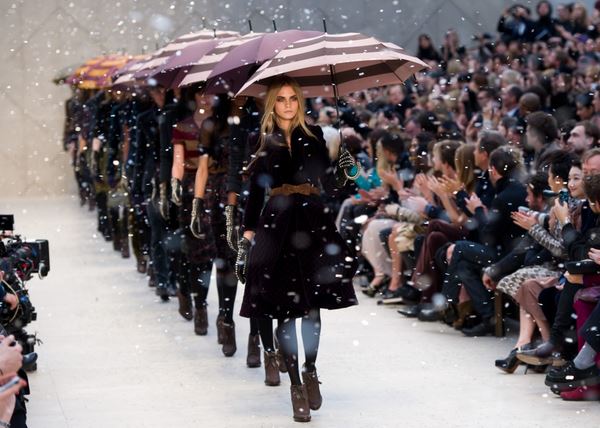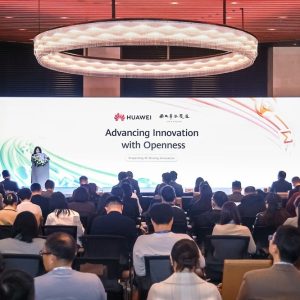
With London Fashion Week kicking off today and running till the 23rd February at Brewer Street Soho, CBR looks at how the tech industry is disrupting the fashion industry.
A survey by Brightcove of 2,000 UK consumers aged 16-55+ found that 77% of consumers say more ‘real-life’ experiences via video and multimedia content would help drive them to make a purchase on UK fashion sites.
It also found that by 2020, nearly half of Brits (45%) expect to do their shopping via mobile devices while one in ten expect to use their TV and virtual reality.
With this in mind here are some examples of tech changing the face of the fashion industry. Companies working in the tech sector alongside retail told CBR:
1. Breaking down barriers
Nick Drew, MD of Really Creative Media said: "Technology is removing the physical barriers when it comes to fashion – and in particular the fashion runway show. For example, in their SS16 collection launch, Versus Versace chose to launch exclusively at one London venue, instead of hosting several different international fashion week shows.
"This did not limit the collection launch’s audience though, thanks to a live 4K shoot, and simultaneous HD live web stream we coordinated, which delivered the looks to a wide range of VIP buyers, fashion bloggers and journalists."
The work Really Creative Media did helped the London runway to deliver multiple video resolutions while also generating a 4K asset that helped to further brand applications such as Digital Signage.
2. Online experience
Andy Jones, Customer Experience Director at digital consultancy Salmon said: "Online shopping has made it incredibly simple for consumers to shop around easily comparing products and receiving advice, with 24/7 shopping now at their fingertips. As a result, retailers are now having to develop more of an experience in-store to entice customers, especially when it comes to fashion.
"Fulfilment for fashion retailers need to be constantly on the ball, as nothing should ever be out of stock thanks to the increasinglyhigh demands from consumers.
"We have seen how technology in stores has helped the fashion retail experience, with magic mirrors playing a very interactive an immersive role. They can offer much more in depth information of an item, offering videos, stories from the designer, how it was made and even outfit advice.
"Magic mirrors can even show different options of garments, changing the colour options whilst trying it on. This all creates a personalised shopper experience that consumers go back to and is revolutionising how people shop for fashion in stores."
3. Omnichannel fasion
Astound Commerce’s UK MD, Terry Hunter said: "Preparing for omnichannel is only one piece of the puzzle. The change in consumer shopping habits demonstrated by Black Friday 2015 and this year’s January sales, combined with the steady growth of mobile shopping, goes to show how important it’s become for retailers to ensure their websites are prepared for inevitable peaks in traffic.
"In my experience the most challenging part of omnichannel is operational logistics and business processes that require significant realignment and coordination of lots of departments and team members. Often the whole organisation needs to be restructured to properly support omnichannel, which means not many organisations are really doing omnichannel properly yet."
4. RFID Technolgy
Steven Skinner, SVP, Retail and Consumer Goods Consulting, Cognizant, said: "There are numerous examples of fashion companies using advanced digital customer experiences – much more than just using Facebook or Twitter – to great effect. Burberry’s London flagship store uses RFID technology to show customers useful information on screens about clothes and accessories they are trying on, and it also helps track and manage inventories, while TopMan has launched a digital personal shopping service in partnership with Google+ for a more tailored on-line shopping experience.
"By coupling the latest fashions with innovative, exciting digital experiences, fashion brands have a new way to achieve this goal – and their methods can provide inspiration for other brands."
"For customers, these experiences help them feel closer to the brand with a personalised, intimate experience and level of service they cannot get elsewhere. The brands themselves, meanwhile, build enhanced customer relationships and obtain a wealth of digital data to help inform their decision-making in the future."
5. ShareWear
A ready-to-share collection of Swedish fashion pieces that people can borrow, the only catch is that you have to share the items forward.
The problem being tackled is that millions of tons of textiles are thrown away each year, so instead of throwing clothes away, share them.
The ShareWear collection is uploaded to Instagram, with the first user to comment on an item is eligible to borrow it for a week. Once the week is over the user shares the item by uploading a photo on to Instagram and the cycle continues.
"The aim of ShareWear is to inspire a more sustainable way of being fashionable. Sharing clothes instead of throwing them away is good for your wallet and good for the environment. Share them forward if you want to be fashion-forward," says Henrik Selin, Head of Department for Intercultural Dialogue at Swedish Institute.
6. Computer aided designs
MultiTaction, which creates advanced interactive displays, said: "With a current high pressure on fashion houses to produce more collections per year and made them available to public immediately after shows, fashion houses are more today than ever thinking how to optimise creative thinking processes.
"New fashion designs are created with computer aided design but still are printed out onto large sheets of paper for review and mark-up. The results are then fed back into the digital environment.
"Where once there were paper print-outs and marker pens the most forward-thinking are now using a large touch screen and interacting seamlessly with collection designs and sizes. There is no need to go back and forth between paper and digital assets providing a much appreciated boost to productivity."
7. New ways to interact with the brand
Richard Dodgson, founder and creative director of Timebased Events said: "Brands can now connect and interact directly with huge consumer audiences through social media channels and live streaming. It provides brands with the opportunity to engage with their target audience in an instant and it is this element of immediacy that a discerning customer now looks for, the ability to receive and digest information quickly.
"The consumer now interacts with brands via a two-way experience and this new dynamic needs to be incorporated into the experiences a brand creates at London Fashion Week.
"The fashion industry is embracing technology and we are going to see more and more brands move towards a consumer-focused model. London Fashion Week will further demonstrate this shift and it will be interesting to witness the interaction between brands and their target consumers both online and through digital experiences. For the first time, London Fashion Week will fully incorporate technological innovation into a series of live shows, underlining the importance of digital experiences at live fashion events and reinforcing London as a world-leader in the industry."
8. Real time analytics
Real time analytics is being used for merchandise tracking and consumer behaviour. Detego created a SaaS software product that is designed for omni-channel strategy and consumer engagement.
Omni-channel retail opens up possibilities like the endless shelf, click & reserve, same-day delivery, and not to forget a consistently positive shopping experience over all channels. Snags or delays in the system are simply not acceptable – not for online reservations, not for the fitting room or in-store pick-up, and most importantly not in terms of item availability.
Detego’s product suite is designed to prevent of out-of-stock situations and provide article visibility on the sales floor, consumer flow and allows staff from managers to senior executives to evaluate the performance of any individual store in real-time.
9. Tackling the surge in product returns
Howard Rosenberg is CEO of B-Stock Solutions said: "The reality is that in order to remain competitive, retailers have had to adapt their return policies to allow customers to buy and return as they please.
"Between buyer’s remorse, relaxed return policies and the substantial increase in online purchases (which come with an average return rate of 12-15%), a massive 3.5 billion items are returned to retailers each year. A large portion of this merchandise can’t go back on store or virtual shelves – due to diminished item condition, damaged packaging or product obsolescence – and is slated for liquidation.
"In much the same way as we now use a digital calendar instead of a leather-bound diary, or our virtual contact list on a smartphone instead of a rolodex, modern technology can greatly assist retailers in managing the liquidation process and making it more efficient.
"One such solution being used more often is an online auction marketplace platform that can be customised, integrated and scaled based on your unique inventory needs. Another might involve leveraging an established business-to-business marketplace that caters directly to thousands of liquidation buyers.
"Regardless of the platform, an automated, technology-driven sales process delivers a faster sales cycle and generates proprietary market intelligence in the form of real data on market prices."
10. Smarter ways to get fashion in-front of people
Gideon Lask, CEO at Buyapowa said: "Fashion has always been a social activity. We go shopping with our friends, we ask friends where they got that great top from and, whether we realise it or not, we tend to buy clothes similar to those worn by our peers.
"It is for this reason that the fashion industry spends a fortune every year paying models, film and sport stars to wear their clothes, or lately paying the stars of social media to post their wares on Pinterest or Instagram.
"But what is interesting now is how the same fashion brands are able to use the fact that their customers are more connected than ever before, with a powerful connected mini-computer by their side 24/7, to empower and enable them to bring them new customers via referrals.
"In other words, by adopting smarter ways to get their wares in front of potential customers they can fire up informal influencer communities and by injecting social buzz they can encourage a large number of customers to share with friends and family across social networks and by email, text, IM and offline ‘word of mouth’. This has been made possible thanks to the latest generation of referral marketing technology and has enabled fashion to spread via the actions of thousands of micro-influencers."






